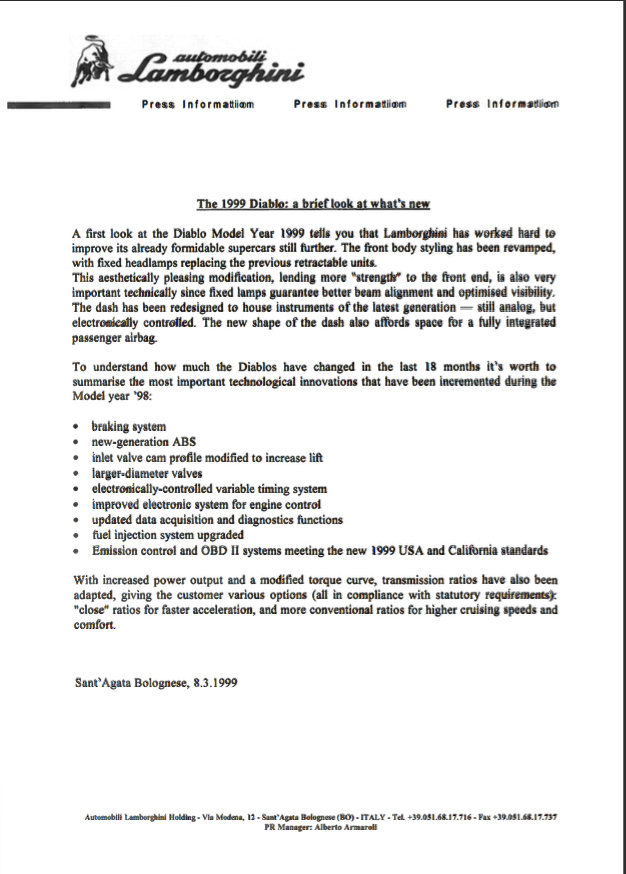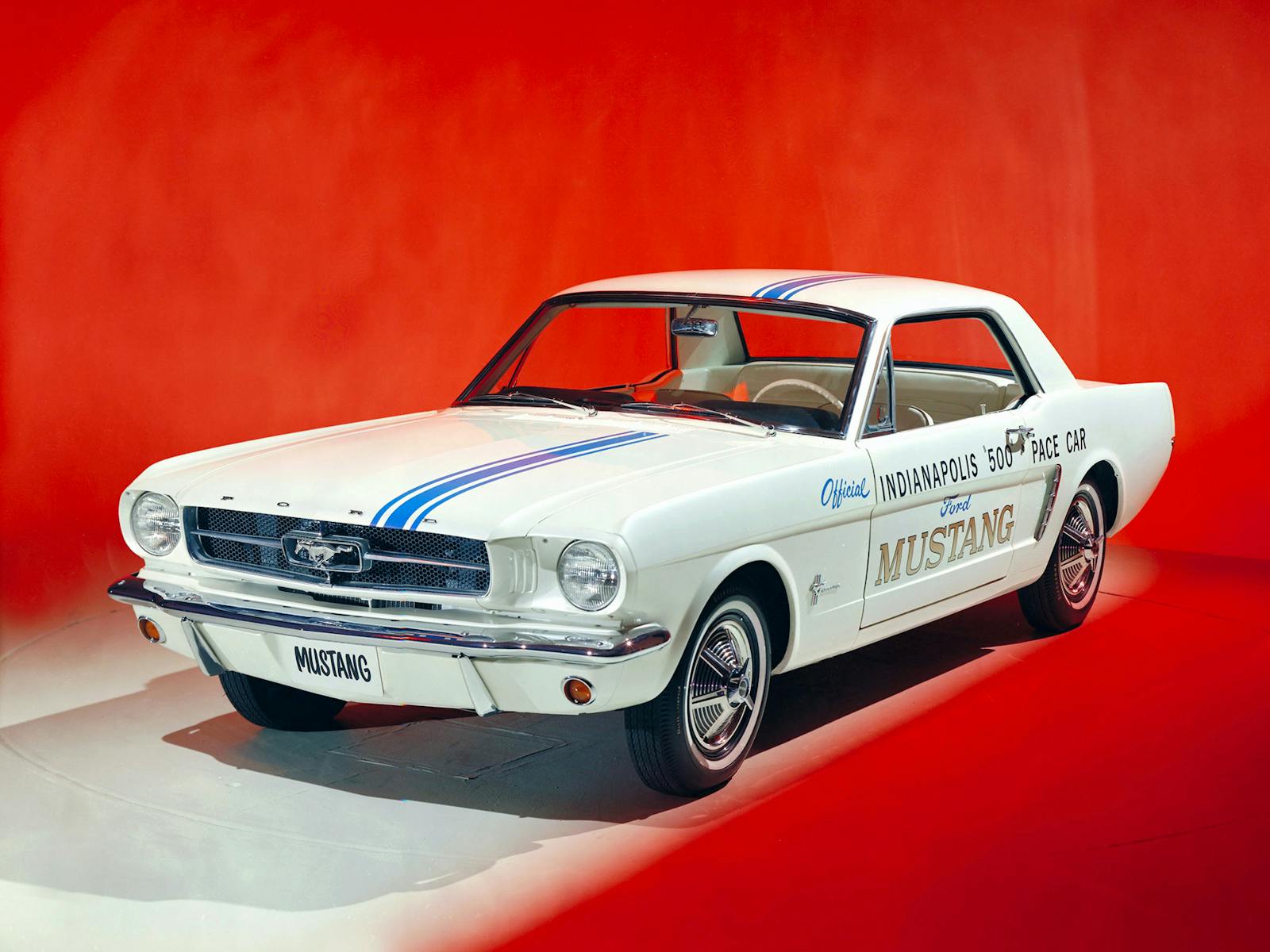Why Audi really bought Lamborghini in 1998
As it approached the end of the 20th century, Lamborghini was a small, financially troubled Italian manufacturer that practically went through more new ownership than model cycles. In the two decades since, the raging bull brand has blossomed into a true success story. That transformation is thanks to Audi’s ownership, which began in 1998. You might think that such an acquisition was more or less the result of Ferdinand Piëch’s shopping spree of big-name brands in those days, but that would be a great over-simplification of the real reasons Audi wanted Lamborghini to join the family. Here’s how it went down.
At that point in time, Audi was still evolving into a legitimate Mercedes-Benz competitor. Piëch’s Quattro S1 WRC cars dating back to the early 1980s were representative of the cutting-edge performance Vorsprung durch Technik was all about, but not all corners of the Audi brand were executed to those same standards. Audi’s first model to use a V-8 engine, the 1988 V8 sedan, was built on an ancient platform powered by a new 3.6-liter DOHC engine Audi spent a huge pile of money to develop. In combination with all-wheel drive, the later 4.2-liter engine and ZF’s four-speed automatic pushed the V8 sedan closer to the demands of its American customer base.
The earliest seeds of the V8’s replacement, the A8, began as early as 1982, when wagon enthusiast Ferdinand Piëch cut a deal with the Aluminium Company of America (Alcoa) to develop a new, aluminum-intensive lightweight chassis. What we know as the first-generation (Typ 4D) Audi A8 debuted at the Frankfurt Motor Show in September 1993, as the Audi Space Frame (ASF) Concept. The A8 would be the first mainstream production vehicle with an aluminum space frame chassis, a major development that made Audi more competitive with Mercedes and, more than a decade later, would underpin the Audi R8 supercar.

Meanwhile, Lamborghini’s future under Chrysler ownership looked less promising. After Lamborghini’s failed Formula 1 engine program and bundles of cash invested into powerboat V-12s, the worldwide supercar market crashed in 1992. Chrysler realized that despite Tom Gale reshaping the Diablo to its taste, there was no way it could sell enough Lamborghinis in the U.S. without taking a loss. So, Chrysler offloaded Lamborghini to some highly well-connected Indonesian and Malaysian investors, who soon cooked up a doomed deal with American startup Vector in their quest to break even.
In Italy, without any real money to burn, the Lamborghini team started brainstorming about the possibility of a second model to succeed the Jalpa, which bowed out in 1988. In the midst of this, the 1993 Diablo VT arrived as Lamborghini’s first all-wheel drive supercar, followed by the hardcore rear-drive SE30 and SE30 Jotas, plus the production Super Veloces in 1995. Both cars were successful enough to give Lamborghini some runway to think about the future.
Current chief technical officer Maurizio Reggiani was first hired by Lamborghini in ‘95 to negotiate a powertrain deal with Audi, a project curiously missing from his official biography. The hope was to co-opt Audi’s 4.2-liter V-8 and all-wheel drive system for a future Lamborghini model, having just proved his mettle in powertrain development at Romano Artioli’s Bugatti from 1987 to 1995. Here’s what Reggiani told me about that idea some 24 years later:
I was the man who went to Audi in order to ask them if they could supply a powertrain to us. The idea came because this time around, we started to think about a second model line we called “Baby Diablo.” This is what became the Gallardo, and [because] our shareholder was an Indonesian company, we didn’t have the capital for a big investment like a new powertrain.
Inside Lamborghini, we realized that one possible powertrain we could have used was the Audi A8’s. Rotate it by 180 degrees, put it in the rear, and with the front differential, you only change the direction. We approached Audi to ask if they could supply us with it. We worked on this for seven or eight months.
After that came the proposal to buy Lamborghini instead, and luckily, our shareholders agreed. After this, the V-8 project got shelved, and we started working on the Gallardo.
Audi made a calculation that it made a lot more sense to just absorb Lamborghini than to go through with this proposed V-8 engine deal. Audi AG signed a deal to buy Lamborghini on June 13, 1998 for an estimated $110 million, a mere fraction of what it paid for Bentley.
Yes, Piëch was on something of a shopping spree in 1998. That year, Volkswagen bought Bentley from Vickers, partly to make sure BMW couldn’t, letting them have the Rolls-Royce brand without its historic factory instead. Bugatti? Well, that must have been a good deal following the bankruptcy, and while concepts like 1997’s Volkswagen W12 Coupé and 2000’s W-16-powered Audi Rosemeyer made no mistake about Piëch’s intentions, the final product had to wear the badge that stands for uncompromised innovation and the pinnacle in performance. The Veyron also justified a price tag fit for Bugatti.
In the years leading up to its acquisition by Audi, while it was mulling the Gallardo, Lamborghini was also developing a successor to the Diablo. In 1996, years after his Diablo-proposal P132 prototype had been shelved by Chrysler, designer Marcello Gandini was called back to create an update on the Diablo SV’s chassis. He came up with the Acosta concept. By 1997, Lamborghini also teamed up with Carrozzeria Zagato, who designed both a limited-edition supercar concept called the Raptor, and what was supposed to be the Diablo’s successor, the Canto.


More from Reggiani on that:
During that time, there were some other projects in the pipeline. We still had the Diablo, but we worked on [its replacement that] was later called the Murciélago. At the time, it was still a Zagato project called Canto. If you’ve seen it, it’s got big air ducts at the rear. Then, Audi asked us to make a new interpretation of the Murciélago, and so we started again from scratch to design the car with Mr. Donckerwolke. Due to this, we were obliged to move the Murciélago a little bit forward, to 2001.

After acquiring Lamborghini in 1998, Piëch’s first order of business was to scrap both Gandini’s Acosta and Zagato’s Canto design proposals for the Diablo successor. Designer Luc Donckerwolke’s vision got the green light, resulting in the eventual Murciélago.
At the same time, in March 1999, the Lamborghini factory sent out the following memo to its dealers regarding the heavily face-lifted 1999 model year Diablos:
Upgrades like fixed headlamps courtesy of Nissan, new ABS system, and a V-12 that wasn’t just more powerful, but also 50-state compliant, made the cars ready for 1999 Diablo buyers in America. These significant improvements were still completely Lamborghini’s doing, and here’s how Maurizio Reggiani remembers how Audi’s influence took root:
We continued working on creating a bridge in order to have new models (leading to the 2004 Gallardo). At the same time, we also worked on model year 2000 of the Diablo, and on the Diablo GT. These were the first two cars through which Audi really put its influence into a Lamborghini product. For the 2000 Diablos, it was mainly refining some materials, and some detail on the exterior. But the big improvement was in the Diablo GT, where we changed the shape of the car dramatically. The big wing, the high scoop on the engine bonnet, and we moved from our twin-throttle body on the engine to a single body, one for each cylinder. That made it much more responsive. This was a huge success, and we put these on other Diablo derivatives as well.
For the 2001 Murciélago, we also modified the engine. From the 6.0-liter V-12 in the 2000 Diablo VT 6.0 and VT 6.0 SE, we moved to a 6.2-liter for 2001. The Murciélago also had a completely new body and interior, and when we presented it in 2001, it was the first Lamborghini made completely under Audi’s responsibility. As for the Gallardo, the V-10 engine, the aluminum space frame, everything was new. And that V-10… we developed in-house in Sant’Agata. Not just that, but all the support structures, the chassis, all the engineering was done in Sant’Agata.



Long after the Murciélagos hit the street, Lamborghini continued to compete in racing with the Diablo GTR, putting Audi’s improvements into practice.
Although Lamborghini’s idea of a mid-engine supercar with the A8’s V-8 was no more, another small-volume manufacturer managed to cut an engine supply deal with Audi to do just that, albeit with rear-wheel drive. Victor Muller’s Spyker C8 debuted in 2000 in Spyder form, and as a Laviolette coupé a year later with a mid-mounted 4.2-liter Audi V-8.

While Spyker soon went twin-turbocharged with the German V-8, by 2003 Audi had revealed its own mid-engine supercar concept. The Audi Le Mans quattro became the Audi R8 in 2006, debuting with the 414-hp, 4.2-liter V-8 that brought Lamborghini’s original idea full circle. For 2009, Audi introduced the Gallardo’s engine for the R8 5.2, putting to good use the fantastic naturally-aspirated, 525-hp V-10 Lamborghini developed under Audi’s watchful eye.
No doubt, Audi arrived just in time in 1998 to turn Lamborghini’s fortunes around. Piëch was buying up premium brands like there was no tomorrow in that era, but the Lamborghini deal was not some childish impulse buy. He recognized that Lamborghini had a solid team of capable engineers, but that the storied Italian brand needed confident leadership to move forward. With Lamborghini’s know-how in its toolkit, Audi would be able to take its performance aspirations to the next level into the new millennium and beyond.
Audi’s purchase of Lamborghini resulted in the V-10 Gallardo, which would become the brand’s best-selling model until the similarly-powered Huracán, but it also allowed Audi to co-opt the mid-engine V-8 supercar concept for itself. Without Lamborghini’s expertise in building such high-performance vehicles, alongside Audi’s resources to support the Italian brand, it’s likely that neither the Gallardo nor the R8 would have been possible. Fortunately we got both, a result that would have made Ferruccio Lamborghini very proud, no doubt.




